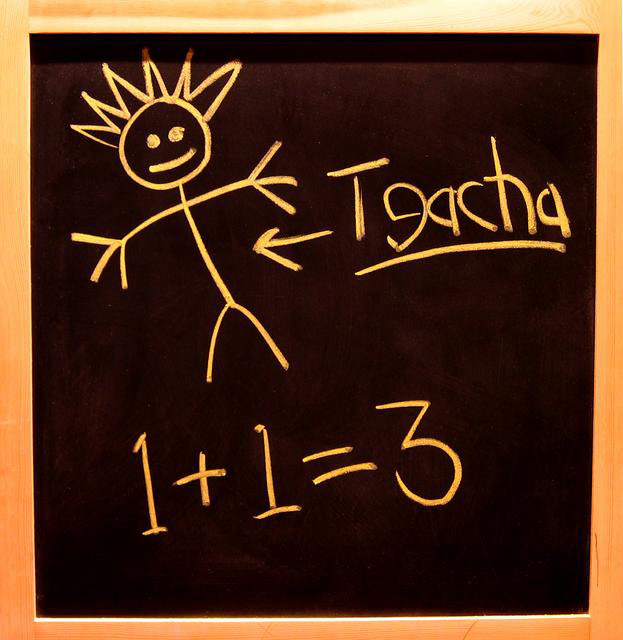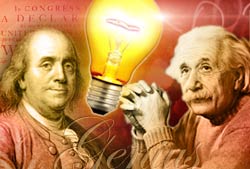Russian Wins But Refuses Math's 'Nobel Prize'

MADRID, Spain (AP)—A reclusive Russian won the math world's highest honor Tuesday for solving a problem that has stumped some of the discipline's greatest minds for a century—but he refused the award.
Grigory Perelman, a 40-year-old native of St. Petersburg, won a Fields Medal—often described as math's equivalent of the Nobel prize—for a breakthrough in topology that experts say might help scientists figure out the shape of the universe.
Besides shunning the award, colleagues say he also seems uninterested in a separate US$1 million (euro775,000) prize he is eligible for over his feat: apparently proving the Poincare conjecture, a theorem about the nature of multidimensional space that has been one of math's greatest puzzles for 100 years.
The award, given out only every four years, was announced at the International Congress of Mathematicians. Three other mathematicians—Russian Andrei Okounkov, Frenchman Wendelin Werner and Australian Terence Tao—also won Fields medals in other areas of mathematics.
They received their awards from King Juan Carlos to loud applause from delegates to the conference. But Perelman was not present.
"I regret that Dr. Perelman has declined to accept the medal,'' said John Ball, president of the International Mathematical Union, which is holding the convention.
Ball said later that he had met with Perelman in St. Petersburg in June, told him he had won a Fields medal and urged him to accept it. But Perelman said he felt isolated from the mathematics community and refused the medal because "he does not want to be seen as its figurehead,'' Ball said. He would not go into detail about why Perelman feels isolated.
Sign up for the Live Science daily newsletter now
Get the world’s most fascinating discoveries delivered straight to your inbox.
Perelman's work is still under review, but no one has found any serious flaw in it, the math union said in a statement.
The Fields medals were founded in 1936 and named after Canadian mathematician John Charles Fields. They carry a stipend of 15,000 Canadian dollars (US$13,400; euro10,400).
The million dollar prize money in the specific Poincare case is separate, and will be announced in about two years by a private foundation called The Clay Mathematics Institute in Cambridge, Massachusetts.
If his proof stands the test of time, Perelman will win all or part of the US$1 million (euro775,000) prize money. In 2000, the institute announced bounties for seven unresolved, historic math problems, including the Poincare conjecture.
Academics have been studying Perelman's proof ever since he left the first of three papers on it on an Internet math archives in Nov. 2002—itself an odd gesture, because normal procedure would have been to seek publication in a peer-approved journal.
Three separate teams have now presented papers or books explaining the details of Perelman's work, and two weeks ago the two-year countdown set by the Clay institute began. During it academics have a final chance to challenge the proof.
Perelman's work draws heavily from a technique developed by another mathematician, Richard Hamilton of Columbia University. The institute says they could conceivably share the money.
Ball said he asked Perelman if he would accept the money. Perelman said that if he won, he would talk to the Clay institute.
The Poincare conjecture, which essentially says that in three dimensions you cannot transform a donut shape into a sphere without ripping it, although any shape without a hole can be stretched or shrunk into a sphere.
Proving the Poincare conjecture—an exercise in acrobatics with mindboggling imaginary doughnuts and balls—is anything but trivial. Colleagues say Perelman's work gives mathematical descriptions of what the universe might look like and promises exciting applications in physics and other fields.
"It is very important indeed because it really gives us an insight into geometry and in particular the geometry of the space we live in,'' said Oxford University math professor Marcus du Sautoy. "It does not say what the shape (of the universe) is. It just says, 'look, these are the things it could be.'''
Perelman is believed to live with his mother in St. Petersburg, but recent efforts to contact him proved fruitless.

Vote for the Greatest Modern Mind
The Geniuses Behind the Geniuses
Smart People Choke Under Pressure
Simple Writing Makes You Look Smart
Expanse of Knowledge Delays Big Ideas









